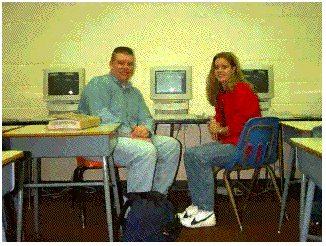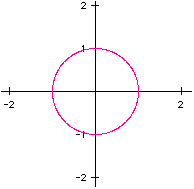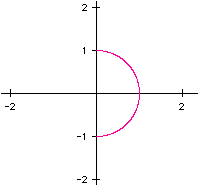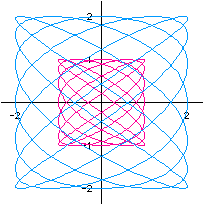

This is the graph of the original function for number 2. x=sin(t), y=cos(t) for the
interval [0,2pi ]. This is the same as the graph of the unit circle, because the x
and y values are the sin and cos of all angles on the interval of [0,2pi ].


If b and z are different numbers, the b/z ratio determines the shape and density of
line placement in the graph. If b/z ratio is low, lines follow the y-axis and become
very dense as b/z becomes very small. If b/z ratio is large, lines follow the x-axis
and become very dense as b/z becomes very large. a and r change the size of the rectangle
containing the graph. Negatives change the initial direction the graphs follow but
do not change the shape.
This is the graph of x= 2 sin(7t) and y=2 cos(5t) superimposed upon the graph of
x=sin(7t) and y= cos(5t).

February 9, 1996
Jon Whidby and Kelly Ferguson